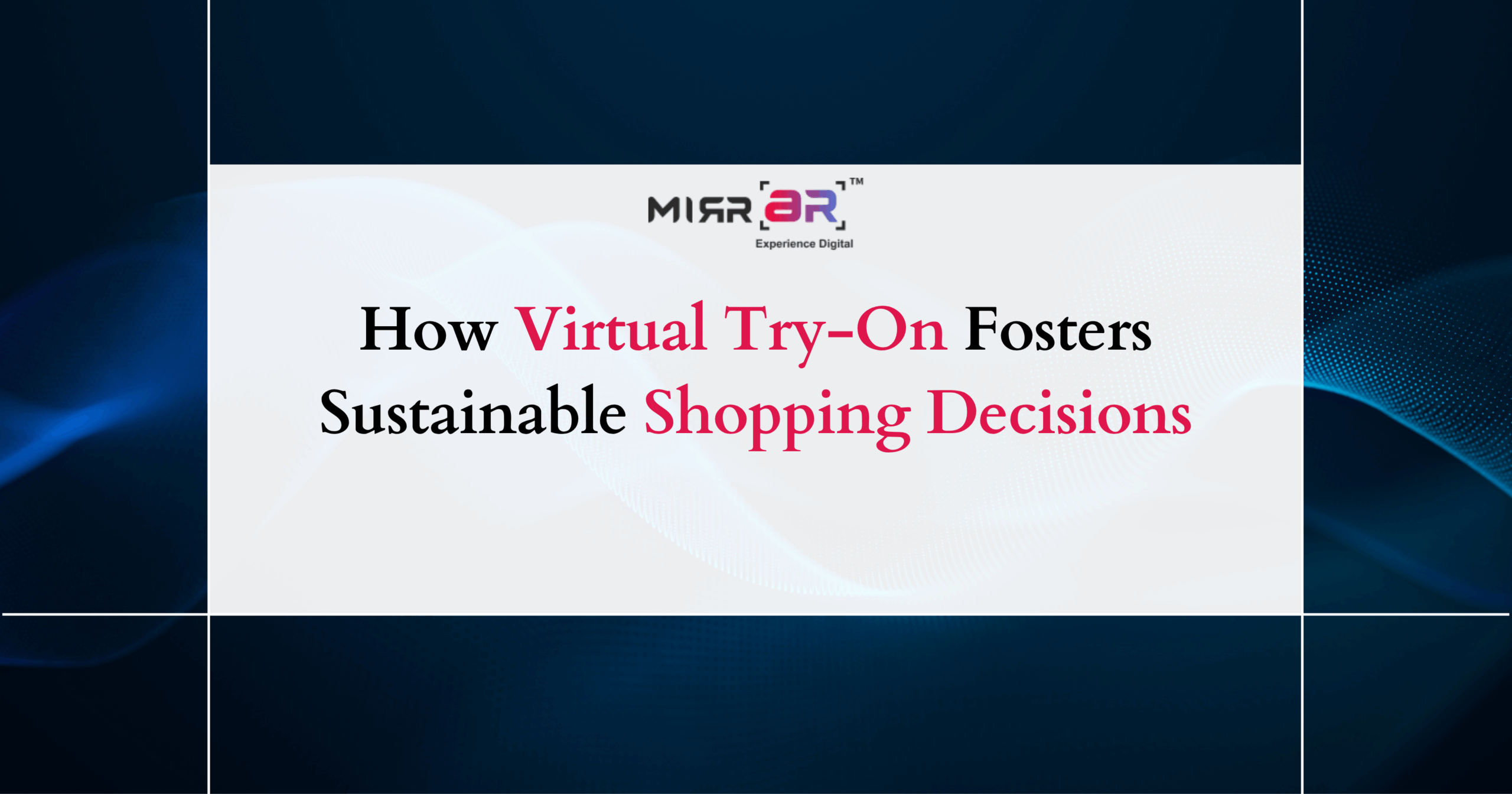
The fashion industry has been under the sustainability spotlight for years. With growing awareness about overproduction, fast fashion waste, and carbon footprints, both consumers and brands are looking for ways to shop and sell more responsibly. While sustainable fabrics and ethical supply chains play a big role, there’s another unexpected yet powerful tool shaping eco-conscious choices—Virtual Try-On (VTO) technology.
By allowing customers to preview products digitally before buying, VTO is helping reduce unnecessary purchases, limit returns, and encourage thoughtful shopping habits. In short, it’s turning the online shopping experience into one that’s not just convenient, but also kinder to the planet.
The Hidden Environmental Cost of Online Shopping
Online shopping has changed how we browse, buy, and receive fashion. But along with its convenience comes a hidden environmental cost: high return rates. Studies show that 20–40% of fashion items bought online are returned—and most of these returns aren’t restocked. Instead, they are often discarded or sent to clearance sales overseas, contributing to landfill waste.
Every returned product also means additional shipping, packaging, and transportation emissions. This “buy now, decide later” culture has a significant carbon footprint, one that is often overlooked in the discussion of sustainability. VTO addresses this issue head-on by reducing uncertainty and ensuring shoppers make more confident, accurate purchases from the start.
How VTO Encourages Responsible Shopping
1. Reducing Return Rates
One of the biggest environmental wins of VTO is its ability to lower return volumes. By letting customers see how clothing, eyewear, or accessories look on them before buying, it eliminates much of the trial-and-error process. When shoppers get a clearer idea of fit, color, and style, they’re far less likely to order multiple sizes “just in case” or make impulse purchases they’ll regret later.
For example, online eyewear retailers like Lenskart use VTO to allow customers to try dozens of frames digitally. This has resulted in fewer returns because buyers feel certain about their choices. Fewer returns mean fewer shipments, less packaging waste, and a lighter carbon footprint.
2. Promoting Thoughtful Purchasing Decisions
Sustainability is not just about what we buy, but how we buy it. VTO turns shopping into a more mindful process. Instead of clicking “add to cart” based on a model’s photo, shoppers can experiment with different options, compare styles, and even mix and match pieces virtually.
This slows down the decision-making process in a positive way. It helps buyers reflect: Do I really need this? Does it fit my personal style? That moment of reflection can reduce impulse buying—a major driver of overconsumption in fashion.
3. Minimizing Overproduction
For brands, VTO can also contribute to a more sustainable supply chain. When customers order the right product the first time, demand data becomes more accurate. This helps brands forecast production needs more precisely, reducing the risk of overproducing items that won’t sell.
In addition, VTO can be paired with made-to-order or pre-order models, where items are produced only after a confirmed purchase. By showing customers a realistic preview of their product, brands can confidently operate with smaller, more sustainable inventories.
VTO’s Role in the Circular Fashion Movement
The circular fashion model—where clothes are reused, recycled, or resold—relies heavily on extending the life cycle of each garment. Virtual Try-On supports this movement by ensuring that when customers buy something, they’re more likely to keep and use it for a longer time.
Imagine an online thrift store integrating VTO, allowing shoppers to try on pre-loved items digitally. This would make second-hand shopping more appealing and accessible, encouraging consumers to choose reused over new. By making circular fashion experiences more engaging, VTO becomes a driver of eco-friendly consumer behavior.
Educating Shoppers Through Technology
Beyond its practical benefits, VTO can also be a tool for sustainability education. Some brands are adding eco-footprint indicators to their VTO platforms—showing how much water, carbon emissions, or waste could be saved by choosing certain fabrics or designs.
For example, a shopper virtually trying on a dress could be informed: This dress is made from organic cotton, saving 2,700 liters of water compared to conventional cotton. This subtle integration of sustainability insights empowers customers to make better-informed decisions without feeling pressured.
Success Stories: VTO in Action for Sustainability
- Warby Parker: The eyewear brand’s VTO feature not only improves buying confidence but also reduces unnecessary production of unsold frames by streamlining demand prediction.
- Gucci: Through its AR try-on for sneakers and accessories, Gucci has cut down on returns while giving customers a luxury shopping experience from home—minimizing the need for physical trials in stores.
- The Fabricant: This digital fashion house creates entirely virtual garments that can be “worn” online through AR, dramatically reducing waste from sample production.
These examples show how the same technology that enhances shopping fun can also drive serious environmental benefits.
The Bigger Picture: A Greener Future for Fashion
VTO is part of a larger shift toward digital transformation in fashion retail. As AR, AI, and personalization tools evolve, we’re likely to see even greater integration between immersive shopping experiences and sustainability goals.
In the near future, VTO could be combined with virtual wardrobes—allowing shoppers to try on new pieces alongside clothes they already own, reducing duplicate purchases. Or it could integrate with rental fashion platforms, enabling customers to try before they borrow, ensuring they’ll actually wear what they rent.
Conclusion: Style Meets Sustainability
Sustainability in fashion requires innovation, and Virtual Try-On is proving to be a powerful ally. By reducing returns, encouraging mindful purchases, and supporting accurate production levels, VTO tackles some of the industry’s biggest environmental challenges.
For shoppers, it offers a guilt-free way to explore styles while making decisions that align with personal values and planetary health. For brands, it’s an investment in both customer experience and corporate responsibility.
Want to make your fashion business both tech-savvy and eco-friendly?
Discover how MirrAR can integrate Virtual Try-On into your online store—turning every purchase into a step toward a more sustainable future.
